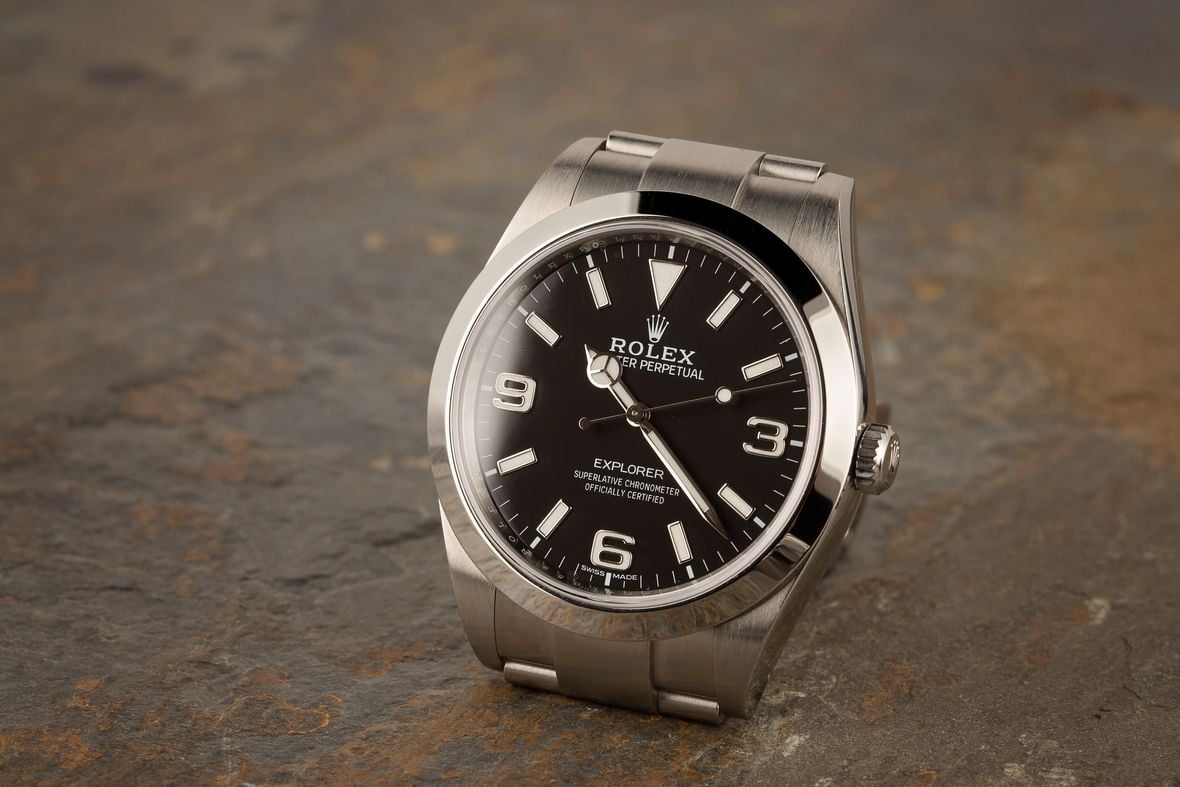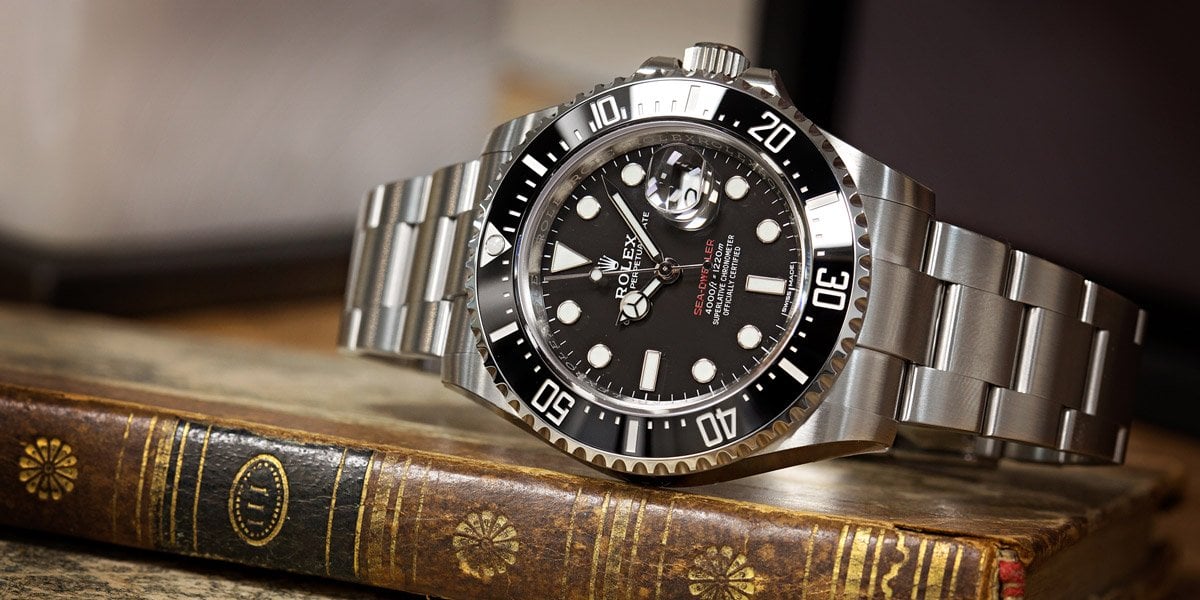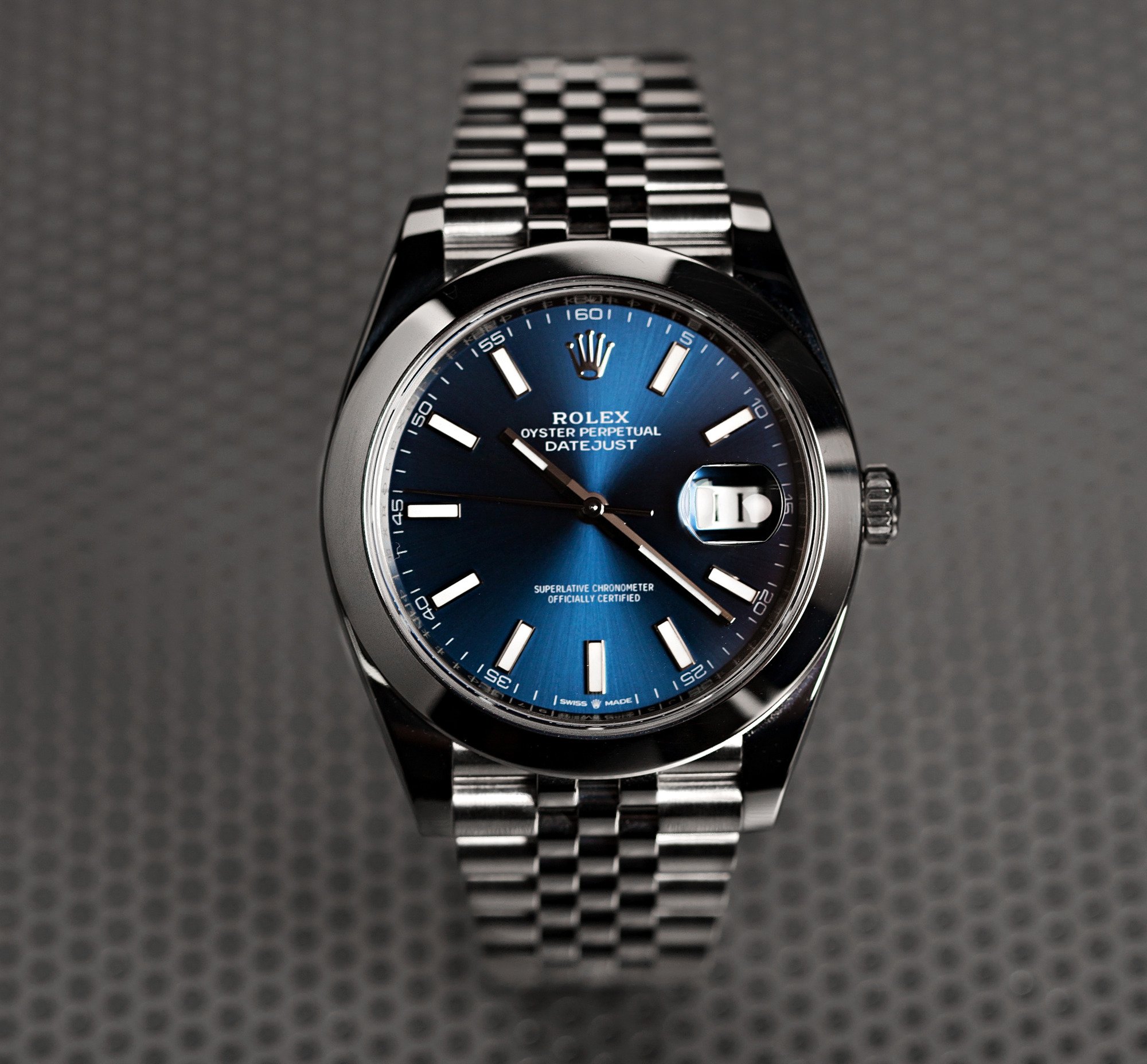Originally introduced in 1953, the Rolex Explorer watch received its now-legendary name when Edmund Hillary and Tenzing Norgay became the first people to summit Mount Everest. In celebration of their tremendous feat, Rolex released the Explorer: a watch made specifically for those with a life of adventure. It’s important to remember that Rolex had supplied that 1953 British Mount Everest Expedition with Oyster Perpetual watches – Hans Wilsdorf, the founder of Rolex, believed in testing Rolex watches out in the real world.
Despite its origins as a tribute timepiece to one of mankind’s most triumphant achievements, the Explorer has always been Rolex’s most understated sports watch. It doesn’t have the bells and whistles of the Submariner, GMT-Master, or Daytona – but what it does have is the pureness of a Rolex tool watch, complete with the type of durability, accuracy, and legibility that you would want when you’re simultaneously sky-high in the clouds and knee-deep in snow.
The Explorer is now the oldest Rolex sports watch model still in production today. While the company has released several Explorer references over the last six-plus decades, the watch’s design has remained remarkably consistent. However, the Rolex Explorer 214270 is the one that deviated slightly from its predecessors and successors. The now-discontinued Explorer 214270 is not only the largest Explorer model ever made but there are also two distinct dial variations to consider. For all the details about this model, dig into our ultimate guide to the Rolex Explorer 214270.
Rolex Explorer 214270
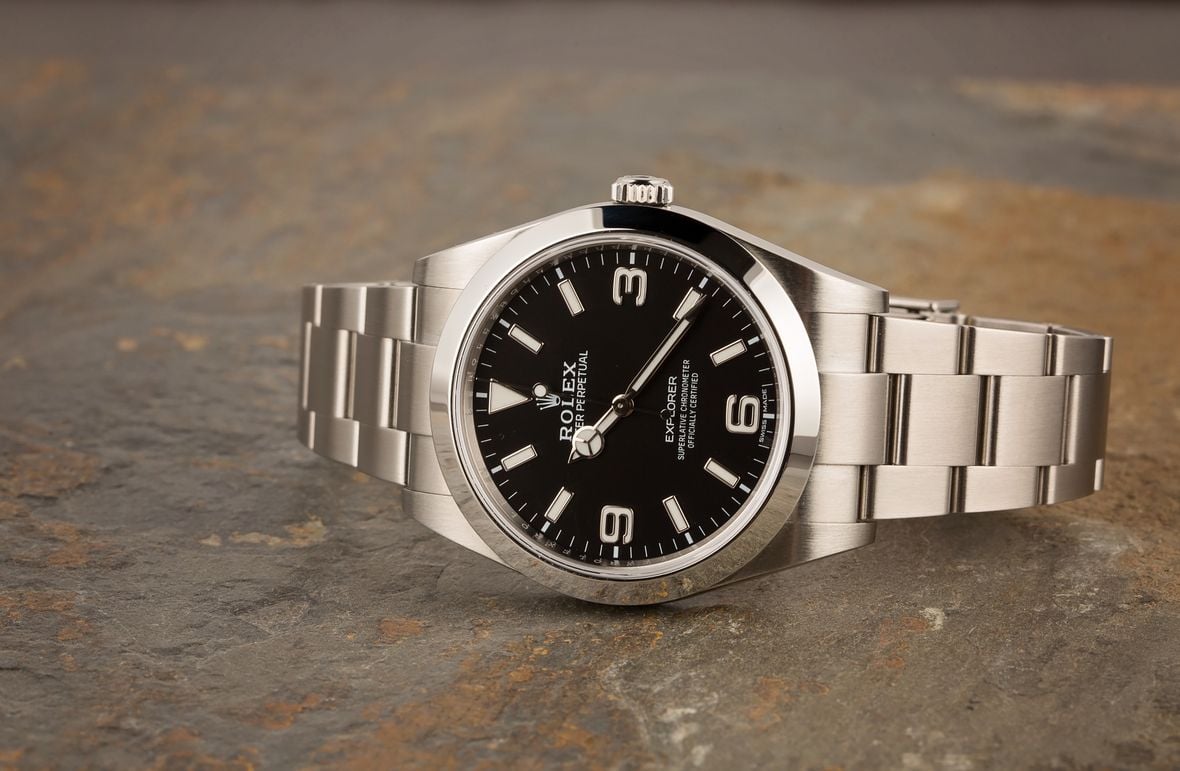
Explorer 214270 Timeline
- 1953: Rolex introduces the Explorer in honor of the successful ascent of Mount Everest.
- 1963: Rolex releases Explorer 1016.
- 1989: Rolex releases Explorer 14270.
- 2001: Rolex releases Explorer 114270.
- 2010: Rolex releases Explorer 214270.
- 2016: Rolex releases Explorer 214270 with an updated dial.
- 2021: Rolex discontinues Explorer 214270 and replaces it with Explorer 124270.
Explorer 214270 Key Features:
- Production Years: 2010 – 2021
- Reference Number: 214270
- Case Size: 39mm
- Materials: Stainless Steel
- Functions: Time w/ Running Seconds
- Dial: Black w/ Luminous Hour Markers
- Bezel: Fixed, Stainless Steel, Smooth Style
- Crystal: Sapphire (Flat)
- Movement: Rolex Caliber 3132
- Water Resistance: 100 Meters / 330 Feet
- Strap/Bracelet: Oyster Bracelet (Stainless Steel)
Click here for a closer look at the evolution of the Rolex Explorer.

Explorer 214270 Design
From a design standpoint, the Rolex Explorer has always adhered to a minimalist philosophy of the bare essentials – perfectly executed – with no extraneous features existing anywhere on the watch. There are no dial colors, bracelet styles, or date complications for the Explorer. A water-resistant case, a three-link Oyster bracelet, and a black time-only dial with three oversized numerals are the defining traits of the Explorer.
However, when Rolex introduced the Explorer 214270 at Baselworld 2010, the then-new reference featured a 39mm case. Up until that point, the Explorer had always measured 36mm; therefore, the 3mm increase broadened the watch’s appeal to include those who prefer slightly larger watches.
Similar to all the Explorer references that came before it, the 214270 is exclusively available in steel – 90L stainless steel to be exact, which Rolex calls “Oystersteel” these days. The watch’s 39mm steel case is water-resistant to 100 meters (330 feet), includes a Twinlock screw-down winding crown, a screw-down case-back, and is topped with a scratch-resistant sapphire crystal.
Additionally, like all its predecessors, the Rolex Explorer 214270 is fitted with a steel Oyster bracelet. However, the Oyster bracelet of the Explorer 214270 benefited from completely solid links (including solid end-links) and a new Oysterlock clasp, which offered more heft and security on the wrist compared to older Oyster bracelets with hollow center links and stamped Rolex clasps. Moreover, the bracelet was freshly furnished with the brand’s innovative Easylink extension system to allow wearers to easily micro-adjust the bracelet by 5mm.
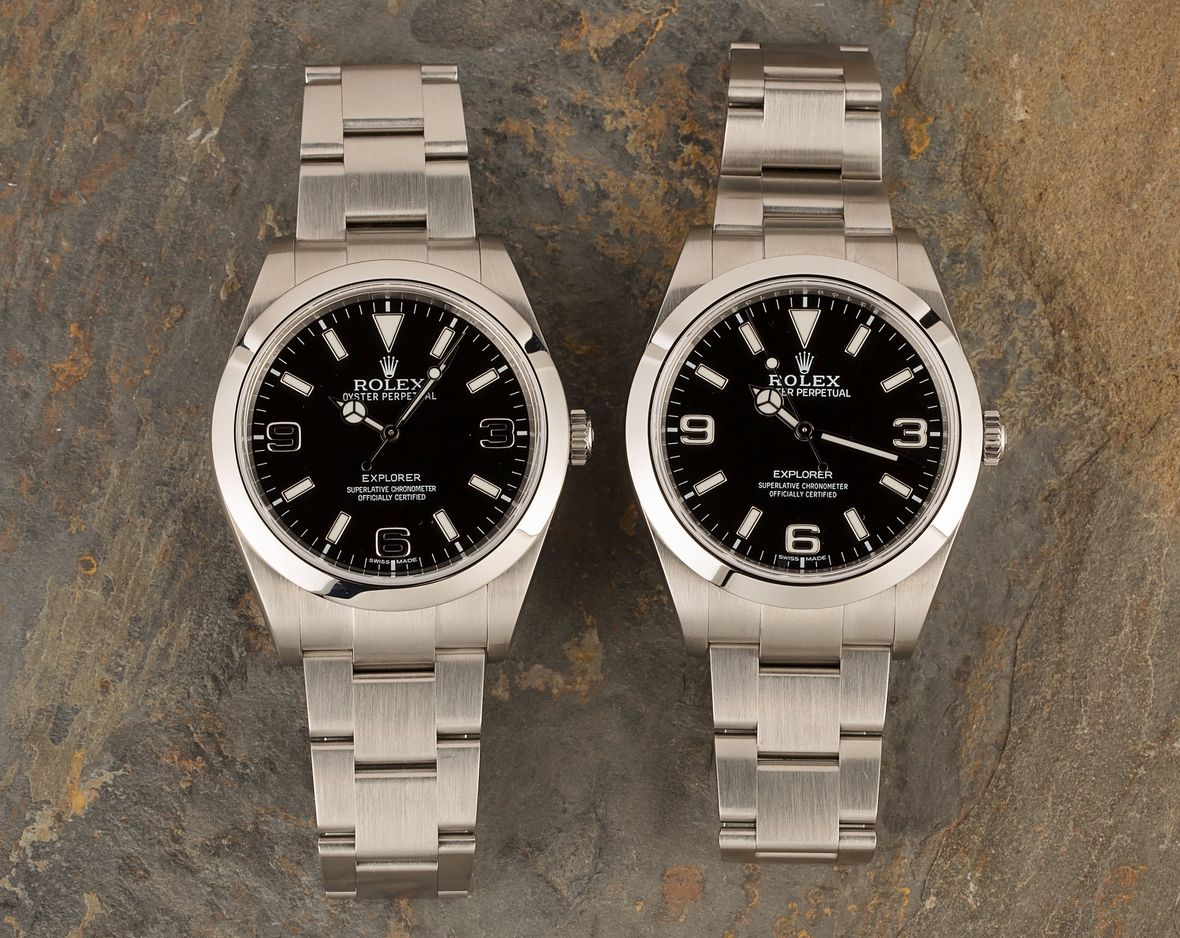
Explorer 214270 Dials: MK1 & MK2
The most recognizable trait of the Rolex Explorer is, without a doubt, its dial design. Ever since the Explorer’s earliest days, the dial has included a mix of baton hour markers, an inverted triangle at 12, and most importantly, large Arabic numerals at 3, 6, and 9 o’clock. In fact, enthusiasts refer to any Rolex watch with 3-6-9 numerals – regardless of the model – as an Explorer-style dial. Barring a few exceptionally rare vintage examples, the Rolex Explorer dial is always black and always outfitted with Mercedes-style hands – and most importantly, it has never had a date window.
Throughout the 11-year production run of the Explorer 214270, Rolex made two dial variants, which collectors now call MK1 and MK2 dials.
When Rolex introduced the 39mm Explorer 214270 in 2010, many were excited to see a larger Explorer watch – not to mention a slightly more matte (instead of glossy) black dial. Yet, others noticed that the timekeeping hands seemed slightly too short since the minute hand did not fully reach the minute track. This early dial variant, which is now known as MK1, was also home to non-luminous solid 18k white gold 3, 6, and 9 numerals. The remaining indexes, in addition to the hands, of course, were coated with Rolex’s relatively new Chromalight lume (that had debuted on the Sea-Dweller two years earlier), which, unlike green-glowing SuperLuminova, emits blue light in the dark.
At Baselworld 2016, Rolex announced an updated version of the Explorer 214270 (notice the same reference number was kept) with a revamped dial. This dial variant, now known as MK2, featured a larger handset, with an appropriately proportional minute hand that reached the minute track. Furthermore, Rolex filled the white gold 3, 6, and 9 numerals with Chromalight luminesce. The Explorer 214270 had the MK2 dial throughout the remainder of the reference’s manufacturing run until it was finally discontinued in 2021.
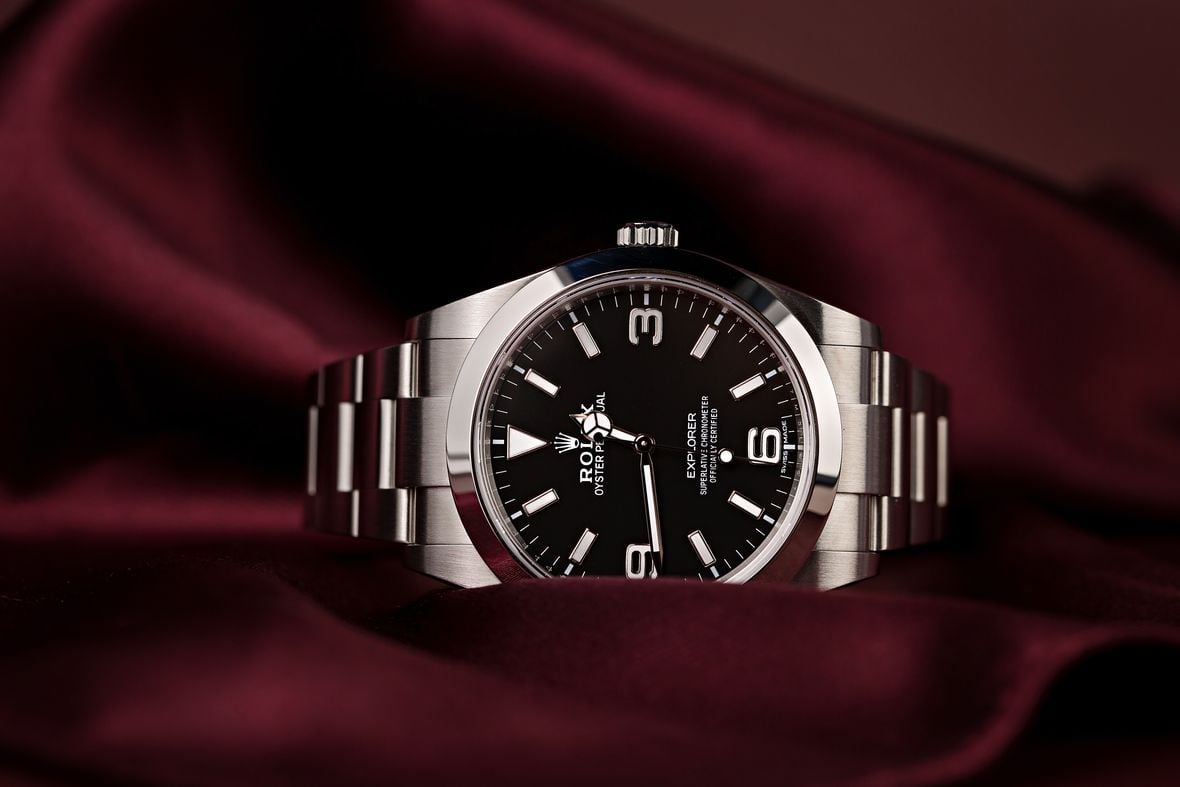
Explorer 214270 Movement
Aside from the larger case, the Explorer 214270 also benefited from a new movement: Caliber 3132 with all the then-new tech that Rolex had to offer.
The COSC-certified Caliber 3132 self-winding movement included the new blue Parachrom hairspring, which is not only resistant to magnetic fields and temperature variations but is also up to ten times more resistant to shocks than a standard hairspring. Plus, along with the blue Parachrom hairspring, Rolex also fitted the Caliber 3132 with Paraflex shock absorbers to provide a greater level of resistance to harmful knocks and impacts. The Caliber 3132 movement supplies the Explorer 214270 with approximately 48 hours of power reserve.
In late-2015, Rolex quietly updated the Superlative Chronometer certification across all of its watches to offer an accuracy rating of -2/+2 seconds per day – a much more stringent standard than the maximum average deviation of -4/+6 seconds per day stipulated by COSC tolerances.
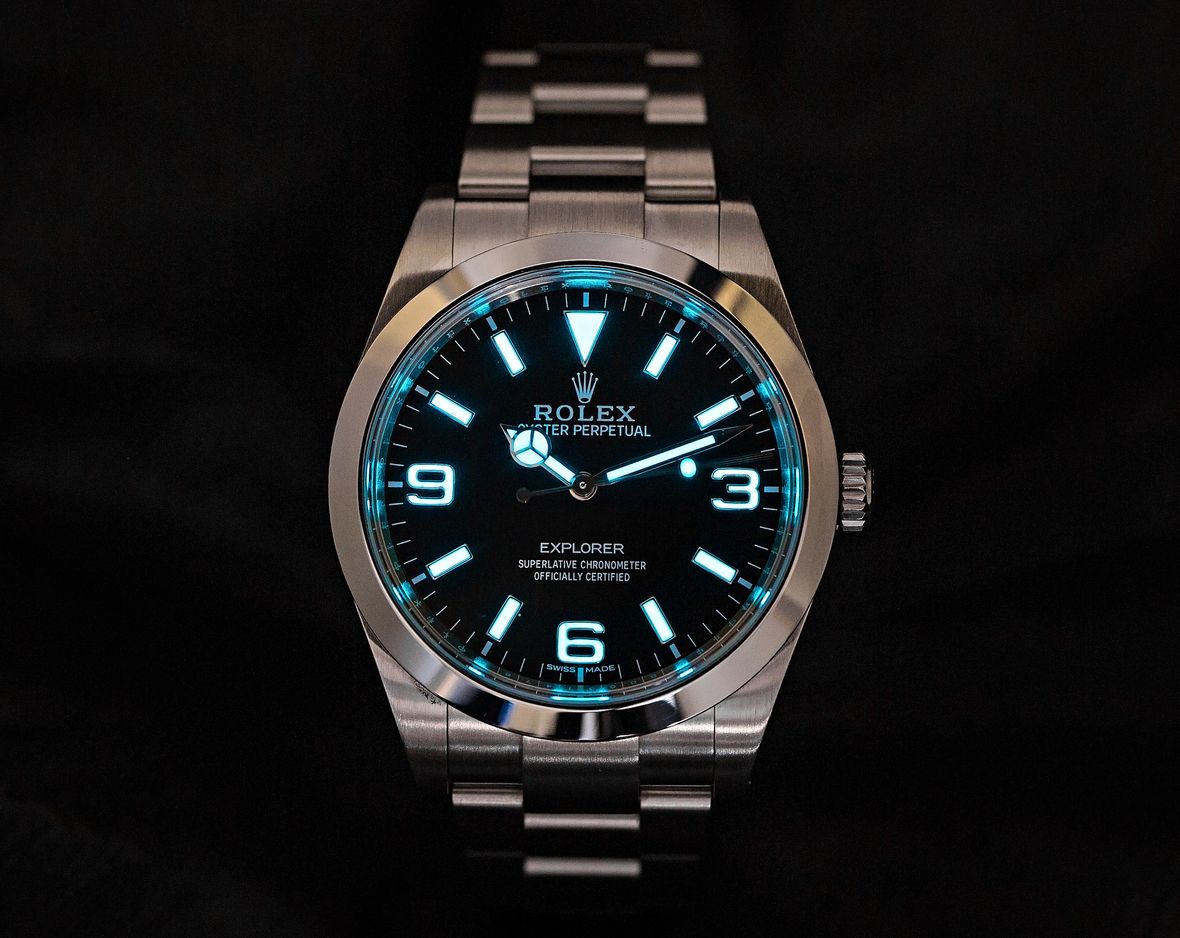
Explorer 214270 Price and Value
Given that Rolex discontinued the Explorer 214270 in 2021, this particular reference is now only available to buy from the secondary market. The last published retail price of the Rolex Explorer 214270 was $6,550, which makes it one of Rolex’s least expensive sports models.
However, similar to almost all stainless steel Rolex sports watches, the open market value of the Explorer 214270 is much higher, particularly now that the watch is no longer in production and can only be found on the secondary market. Prices of pre-owned Explorer ref. 214270 watches with Mark 1 dials start at around $9,000 while those with Mark 2 dials start at around $10,500. With that in mind, prices can reach up to $15,000 for well-preserved examples that still have their factory stickers along with their original boxes and warranty cards.
In 2020, the average price paid for a pre-owned Explorer 214270 was about $7,200, which is still more than its brand-new retail price but significantly less than the open market price of the current production model. This dramatic increase in price illustrates just how much the value of this particular Rolex sports reference has skyrocketed in just one year.
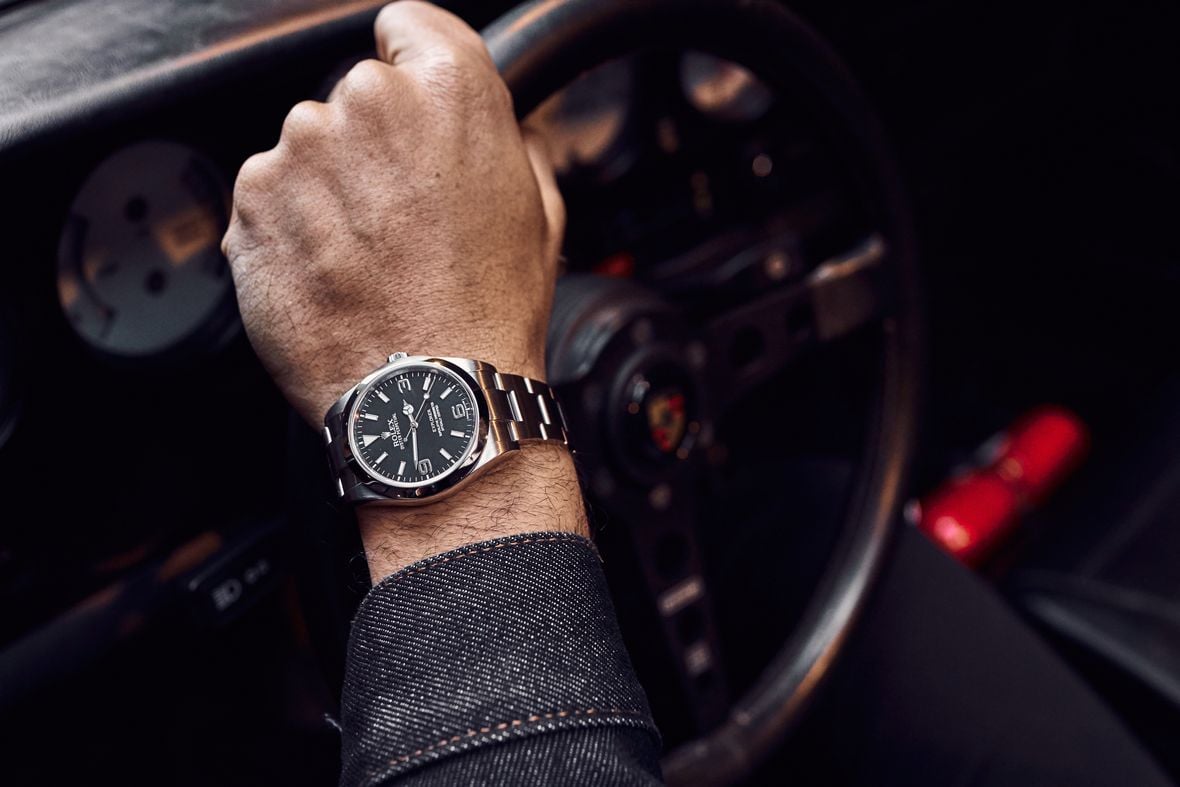
The Largest Rolex Explorer Watch
In Spring 2021, Rolex launched its latest crop of models, including a brand new generation of Explorer watches. When Rolex announced the newest generation Explorer, there were two surprises: the size and the introduction of a two-tone variant.
That’s right, the Explorer has now returned to its original 36mm diameter. Therefore, the reference 214270 is the only model in the Explorer’s history to ever feature a 39mm case size, which is often considered to be a “sweet spot” case size for many collectors, and also one that is rapidly disappearing from Rolex’s contemporary catalog (the 39mm Oyster Perpetual was replaced by a 41mm model the previous year).
So, if you’re a fan of the iconic Rolex Explorer design but prefer watches that are larger than 36mm, then the 39mm Explorer 214270 is the ideal choice. Produced for 11 years, and with two dial variants, we doubt that we’ll see another Explorer with the same measurements as the 214270 ever again, and if current price trends are any indicator of the future, these timeless Rolex sports watches are only going to get more expensive in the coming years.
